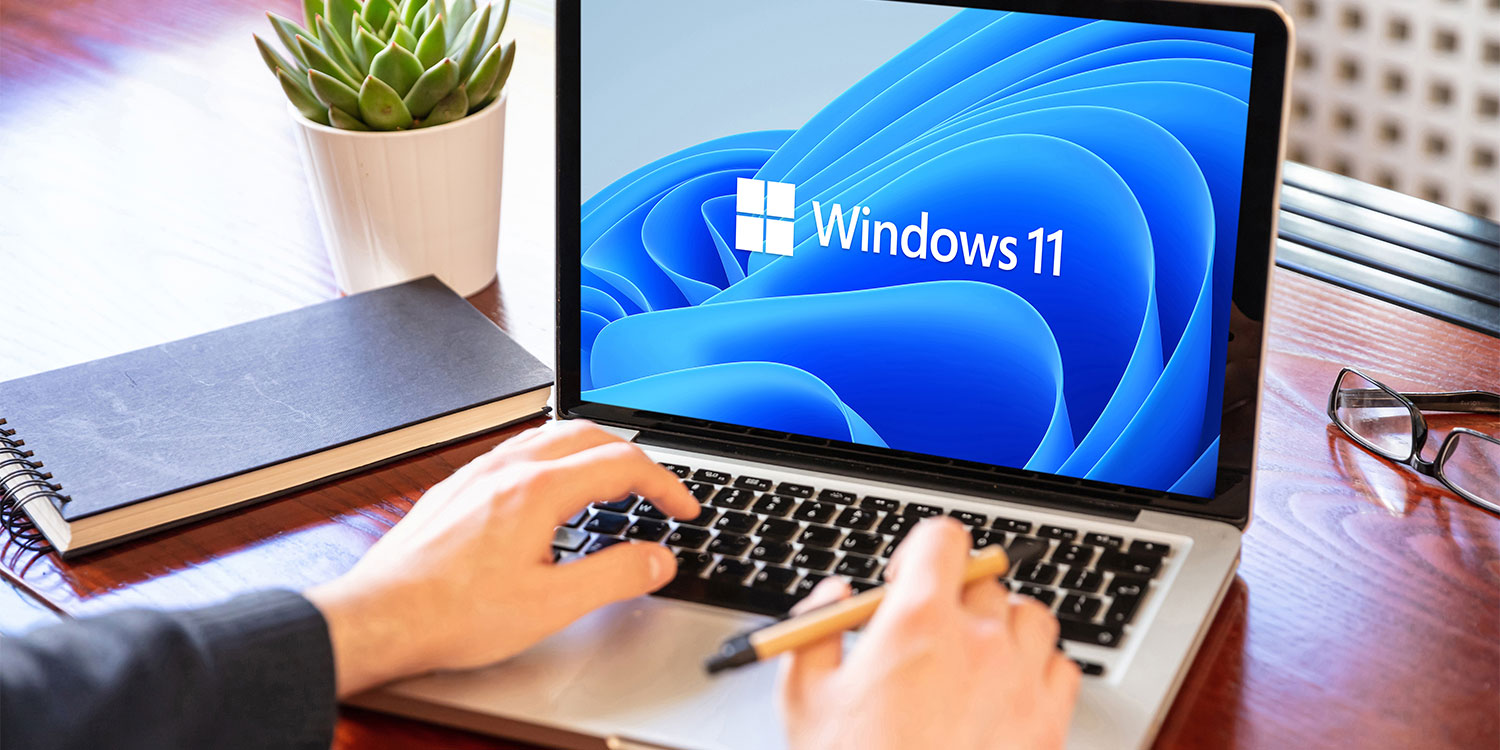
Setting up a new laptop with Windows 11 can be an exciting experience, but it can also feel overwhelming with all the options and settings available. Whether you’re upgrading from an older version of Windows or starting fresh with a brand-new device, knowing how to properly set up your laptop will ensure that it’s ready to go and customized to your needs. This guide walks you through the essential steps how to set up your new laptop with Windows 11.
Getting your new laptop up and running with Windows 11 is more than just turning it on. Properly setting up your laptop ensures that it functions smoothly, stays secure, and is tailored to your preferences. By following the correct setup process, you can enjoy all the new features of Windows 11, optimize your laptop’s performance, and start using it for work or play right away. From personalizing settings to connecting your Microsoft account, this guide will cover everything you need to get your new Windows 11 laptop working perfectly.
1. Power On and Start the Initial Setup
The first step when setting up a new laptop with Windows 11 is to power it on and begin the initial setup process. Most new laptops come with Windows 11 pre-installed, so you won’t need to worry about installation.
Press the power button to turn on your laptop.
- Once powered on, the setup process will begin. Windows will guide you through the initial setup screens, asking for basic information like your language, region, and keyboard layout.
- During this phase, you’ll also be prompted to choose your internet connection. If you’re using Wi-Fi, select your network and enter the Wi-Fi password. Connecting to the internet is essential for downloading updates and signing into your Microsoft account.
2. Sign in with a Microsoft Account

Windows 11 encourages users to sign in with a Microsoft account, which offers many benefits like syncing your settings, files, and preferences across devices. If you don’t have a Microsoft account, you’ll be given the option to create one.
To sign in:
- Enter your email address or phone number associated with your Microsoft account.
- Choose a strong password to secure your account.
- If you have two-factor authentication enabled, follow the steps to verify your identity.
- Alternatively, if you prefer not to use a Microsoft account, Windows 11 allows you to create a local account, though some features (such as syncing settings and accessing the Microsoft Store) will be limited.
3. Set Up Privacy and Security Settings
Windows 11 takes privacy and security seriously, and the setup process includes several options for controlling how your data is shared. You’ll be prompted to review and adjust these settings to ensure your preferences are respected.
Common privacy settings you can adjust include:
- Location: Decide whether to allow apps to access your location.
- Activity History: Choose whether Windows should keep track of your activity for personalized experiences.
- Diagnostic Data: Decide how much diagnostic data you’re willing to share with Microsoft.
- Cortana: Enable or disable voice assistant features from Microsoft’s Cortana.
- Additionally, you’ll be given the option to enable Windows Hello for facial recognition or fingerprint sign-in, which adds an extra layer of security to your laptop
4. Customize Your Preferences

After configuring privacy settings, Windows 11 allows you to personalize your system based on your preferences. You can choose from a variety of themes, colors, and display settings to make your laptop feel more like your own.
Personalization options include:
- Choose a color theme: Select between light or dark mode, or create a custom color theme.
- Select a background image: Choose from default backgrounds or set your own image as the wallpaper.
- Adjust font size: Increase or decrease the size of text on your display for easier readability.
- Taskbar settings: Decide whether to center or align the taskbar icons to the left and choose other taskbar preferences.
- Windows 11 offers plenty of customization options to create a user experience that suits your style and needs.
5. Install Windows Updates
After the initial setup, it’s important to ensure your system is up-to-date with the latest Windows updates. These updates often include critical security patches, bug fixes, and performance improvements that can enhance your laptop’s functionality.
To check for updates:
- Click the Start menu and open Settings.
- Go to Windows Update on the left sidebar and select Check for updates.
- If updates are available, let Windows download and install them.
- It’s a good idea to perform this step right after setup to ensure that your laptop has the latest features and security enhancements.
6. Install Essential Software and Drivers

Once Windows 11 is up-to-date, it’s time to install essential software to get your laptop working the way you want it to. Many new laptops come with pre-installed software, but you may want to add additional programs like web browsers, media players, and productivity tools.
Essential software to consider:
- Web browser: Chrome, Firefox, or any browser of your choice.
- Microsoft Office or alternative: If you need word processing or spreadsheet software.
- Antivirus software: Although Windows Defender provides strong protection, you can choose third-party antivirus software for added security.
- Drivers: Some laptops may need specific drivers for optimal performance. Check the manufacturer’s website for any necessary driver downloads.
- Additionally, visit the Microsoft Store to install apps directly from Windows 11’s app marketplace. This includes apps for entertainment, work, productivity, and more.
7. Set Up Backup and Restore Options
Having a backup strategy is crucial to protect your important files and data. Windows 11 offers a variety of backup options, including File History and OneDrive for cloud storage.
To set up backups:
- OneDrive: Sign in to your Microsoft account and enable OneDrive to automatically back up your files to the cloud.
- File History: Connect an external hard drive or network drive and enable File History in Settings > Update & Security > Backup.
- In case anything goes wrong, setting up restore points or creating a system image backup can help you recover your system to a previous state.
8. Set Up Windows Security Features

Windows 11 includes powerful built-in security features to protect your data from malware, viruses, and other threats. Be sure to enable these features during the setup process.
Important security features to activate:
- Windows Defender Antivirus: The built-in antivirus software that protects against malware and viruses.
- BitLocker: If your laptop supports it, enable BitLocker encryption to secure your hard drive.
- Firewall: Ensure your firewall is enabled to prevent unauthorized access to your system.
- Secure Boot: This ensures that your system starts up securely by preventing unauthorized software from loading.
- These features help safeguard your system against various types of cyber threats.
9. Sync Your Devices and Set Up Virtual Desktops
One of the exciting features of Windows 11 is its seamless integration with other devices. If you use a Windows phone, tablet, or another Windows device, you can easily sync your data, apps, and settings across all your devices.
Additionally, you can set up virtual desktops for better organization. Virtual desktops allow you to create multiple desktop environments, helping you keep work, entertainment, and personal files separate.
To create a virtual desktop, click on the Task View button on the taskbar and select New Desktop. This will help you stay organized and manage your workflow more efficiently.
10. Final Adjustments and Enjoy
Once you’ve completed all the setup steps, your laptop with Windows 11 is ready to use. Take a moment to explore new features like the Start Menu, Snap Layouts, and Widgets, which are designed to improve your productivity and user experience.
Windows 11 also introduces a new, centered taskbar and Start Menu, along with smoother animations and improved multitasking features.
Conclusion: Setting Up Your New Laptop with Windows 11
Setting up a new laptop with Windows 11 involves several important steps to ensure that your system is secure, personalized, and optimized for use. From signing in with a Microsoft account and installing updates to setting up backup options and configuring security features, each step is crucial for getting the most out of your new device. By following these steps, you’ll be ready to enjoy a smooth and efficient computing experience on your new Windows 11 laptop.


















